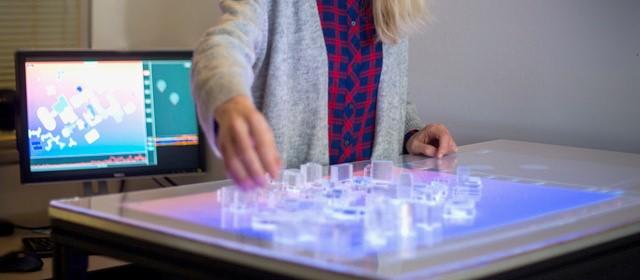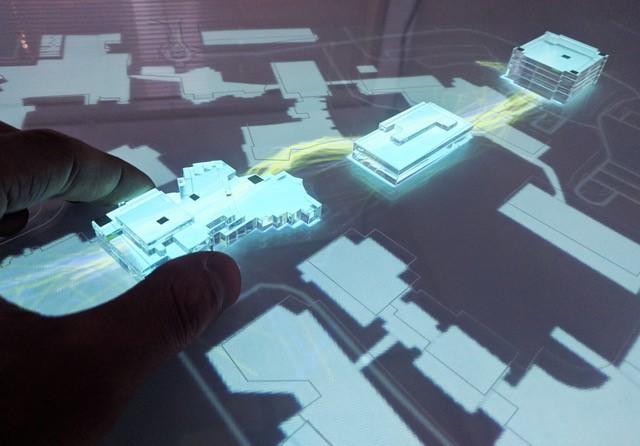
May 20, 2021
Intersections between data visualization and sustainability offer innovative student research experiences
Where does innovation happen at UCalgary? While some might immediately think of classrooms, labs and incubator spaces — they’re not wrong. But what happens when you broaden the scope and turn the entire campus into an innovation ecosystem? The answer: UCalgary’s Campus as a Learning Lab.
Hands-on opportunities to discover, create and innovate
Campus as a Learning Lab (CLL) is an innovative University of Calgary initiative with a focus on experiential learning and fostering a campus culture rooted in sustainability. Learning labs enable campuses to be active environments for teaching and learning, while enabling the co-production of knowledge and increasing the ability of an institution to contribute to sustainability challenges. Inspired by similar initiatives at the University of British Columbia and Princeton University, UCalgary is using its campus as a lab to test and model innovative sustainability practices, leveraging its research, academic and operations functions.
The process is simple. Students partner with campus stakeholders to address real sustainability challenges on campus, developing innovative solutions while cultivating valuable leadership, collaboration and stakeholder engagement skills. With hundreds of students involved from all levels of study, the range of projects completed over the years is extensive, fostering a deeper culture of sustainability engagement across the campus community. Equally impressive are the methods used by students to explore their sustainability challenges. This past year saw projects that harnessed the engaging powers of data visualization techniques to examine campus issues addressing accessibility, health and well-being as well as building energy usage.

Carmen Hull
Creating an accessible and safe indoor route-finding system
Supported by the PURE Program, Helen Zhang, an undergraduate student from the Schulich School of Engineering, applied her skills in GIS software and web mapping to create an indoor path visualization and route-finding network to model interconnected buildings at UCalgary. Zhang utilized ArcGIS desktop for route building and ArcScene for 3D visualization. With the rise of COVID-19, regulating social-distancing procedures in travel within buildings has become an important safety focus at UCalgary. Another benefit of indoor path visualization tools are the opportunities that exist to improve campus accessibility for people with disabilities.
Users select one of three travel scenarios: the fastest path, disability-friendly path, and a social distancing filter that can be applied to either. Many buildings on the University of Calgary’s Main Campus were constructed with interconnected indoor pathways that allow for convenient indoor travel from building to building. However, prior to Zhang’s project, an interactive map illustrating the connections between buildings did not exist. The indoor routing application she developed addresses this gap by making travelling and navigating through the buildings more accessible, convenient and safe.
Mapping human experience by evaluating campus restorative green spaces
Angela Rout, a recent PhD graduate in Computational Media Design at UCalgary’s SmartCampus Project, focused on how people use and perceive the campus, and how to visualize this data for multiple applications. Design features such as greenspaces contribute to enhancing the health and well-being of UCalgary’s community and our natural environment. In the Restorative Greenspaces component of her project, Rout used an online survey to ask students what features they would like to see in greenspaces on campus. She then compared the survey responses with smartphone data demonstrating how students use existing greenspaces. The foundational data set for her research was anonymized data from 300 students who volunteered to share how they moved around the campus via GPS locations from their smartphones.
The data shows where students were at different points in time when on campus, as well as paths they took to walk across campus. Using this data, Rout’s research used data visualization to examine the ways in which location data can be used to understand human behaviour in urban settings, how best to incorporate location data in public engagement, as well as patterns in the use of design features. Her research was presented at discussions for UCalgary’s new Main Campus Landscape Plan.

Carmen Hull
Visualizing campus energy consumption using 3D models
Carmen Hull is a recent PhD graduate in Computer Science (Data Science and Visual Computing). For her doctoral research, Hull created a three-dimensional interactive energy use model that uses advanced data visualization to engage community members in considering and reducing their energy use. The outcome of Hull’s research is a beautiful model of the campus that shows outside temperature changes through the course of a year and associated heating, cooling, electricity, water, and occupancy data. The data is linked directly to the object that it represents. The model can help students, faculty, and staff to see how much energy we are using, and it allows for a more holistic representation rather than looking at typical sources of energy data like spreadsheets. Hull’s physical manifestation of campus provides a new way for energy managers to look at their data by adding an element of playfulness and fun that makes it more engaging.
These projects represent a small fraction of the types of creative initiatives advancing sustainability on campus. When your entire campus is a learning laboratory, the opportunities for interdisciplinary collaboration, creating and applying learnings to real sustainability challenges are endless. Innovation waits for nobody — explore, get inspired and learn more about UCalgary’s Campus as a Learning Lab today.
The projects highlighted within this article connect to SDGs 3, 4, 7, 9 and 11 of the United Nations Sustainable Development Goals.
The University of Calgary’s Institutional Sustainability Strategy provides a road map for continuous improvement in our pursuit of excellence and leadership in sustainability. We aim to be a Canadian post-secondary education leader in sustainability in our academic and engagement programs, administrative and operational practices and through supporting community and industry in their aims for leadership in sustainability. Learn more about UCalgary’s leadership in sustainability.
Canadian Innovation Week at UCalgary
As part of UCalgary’s partnership with the Rideau Hall Foundation, we are celebrating Canadian Innovation Week. Join UCalgary experts and researchers May 17-21, for a week of conversation, inspiration and ideas. Learn more.






